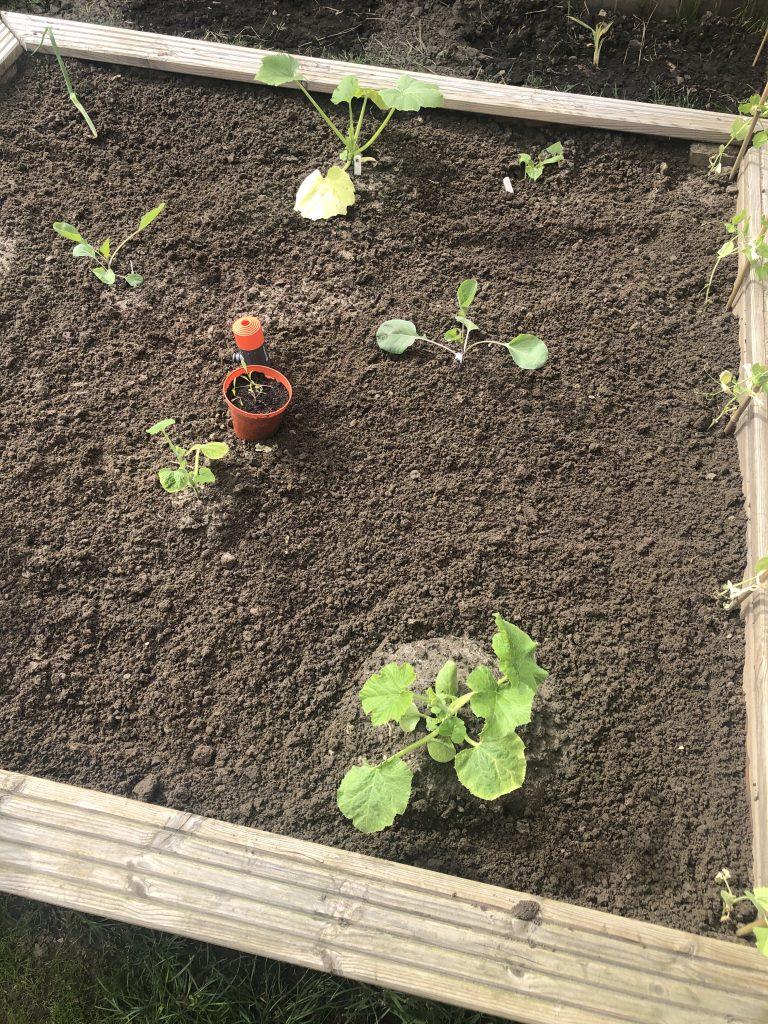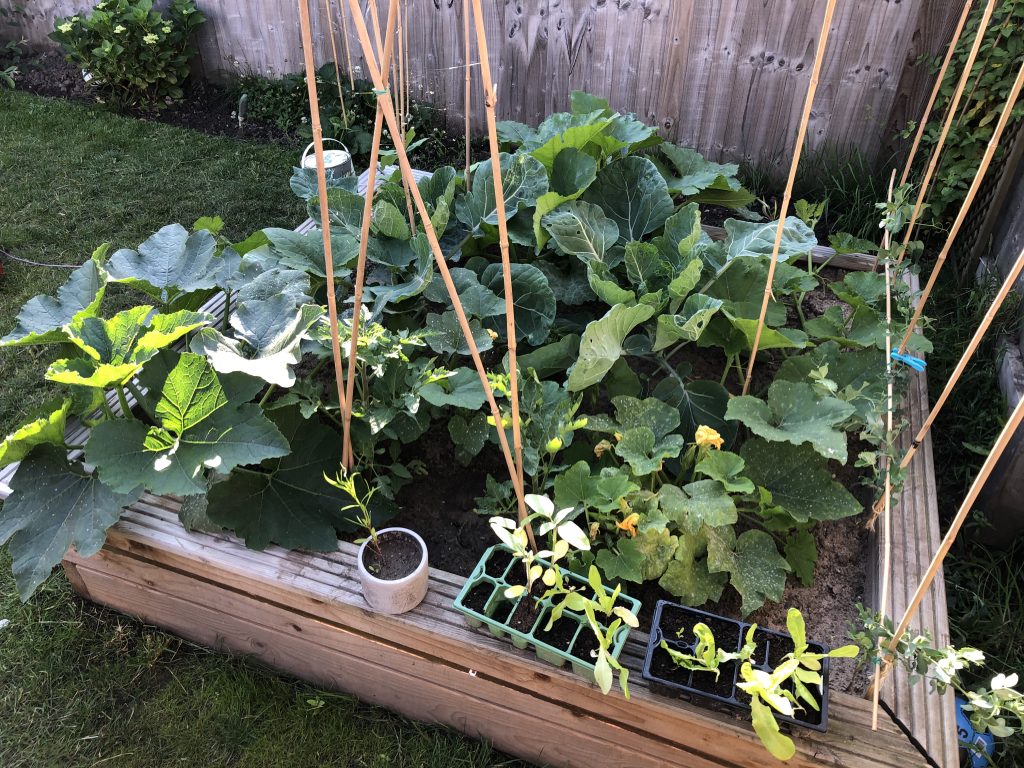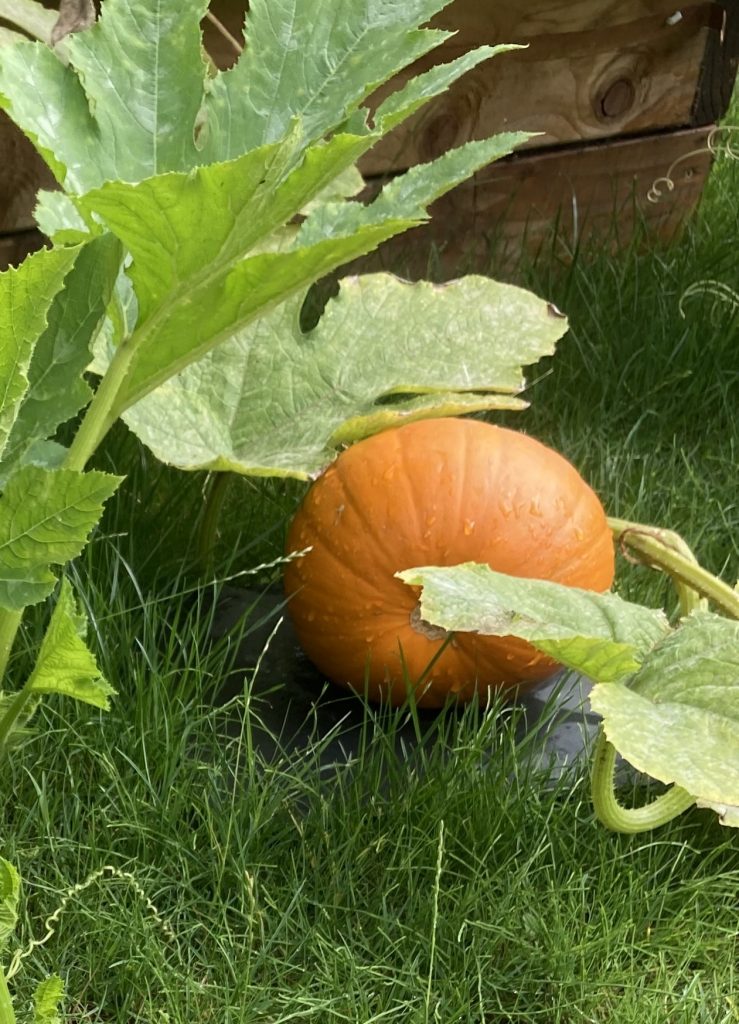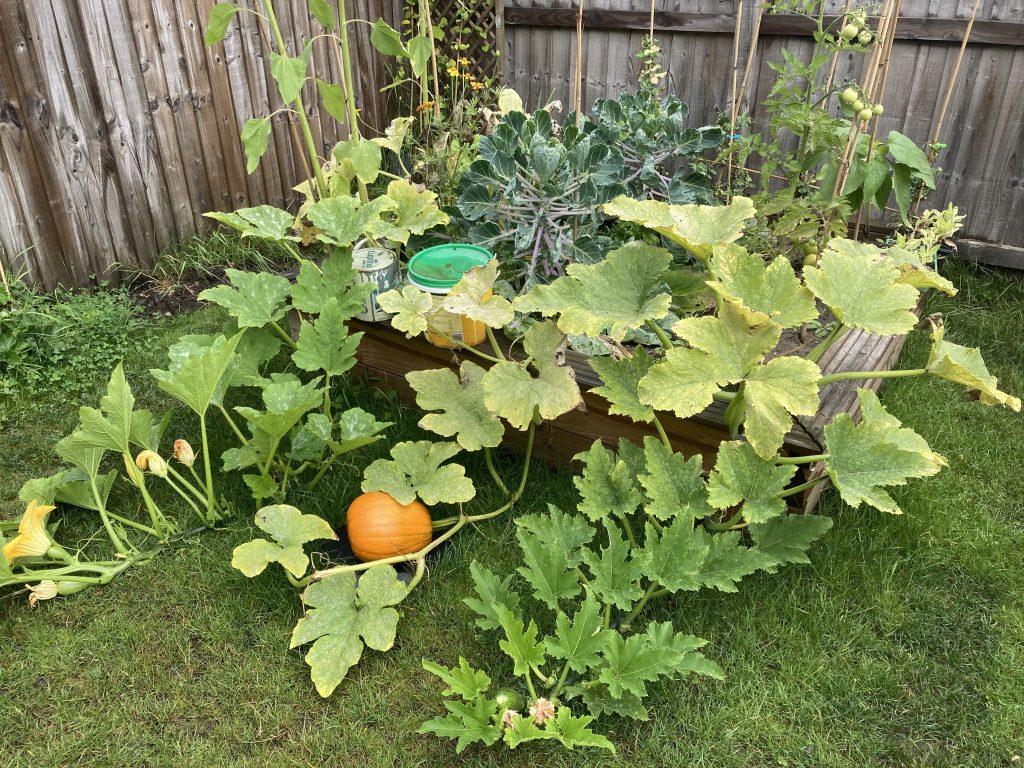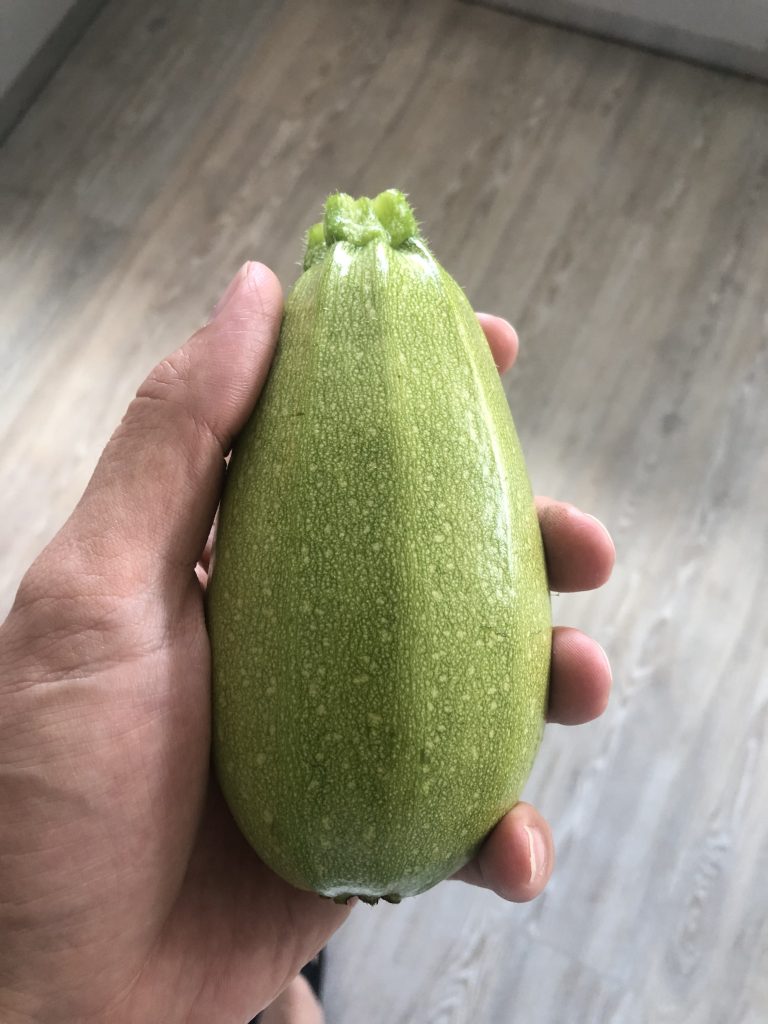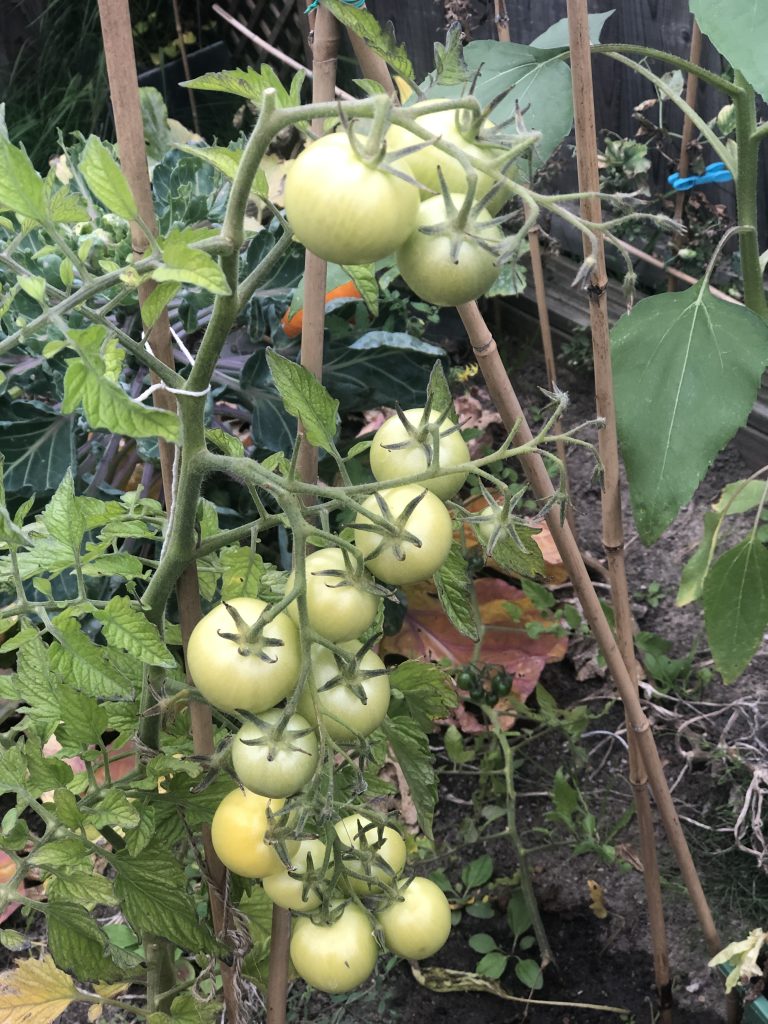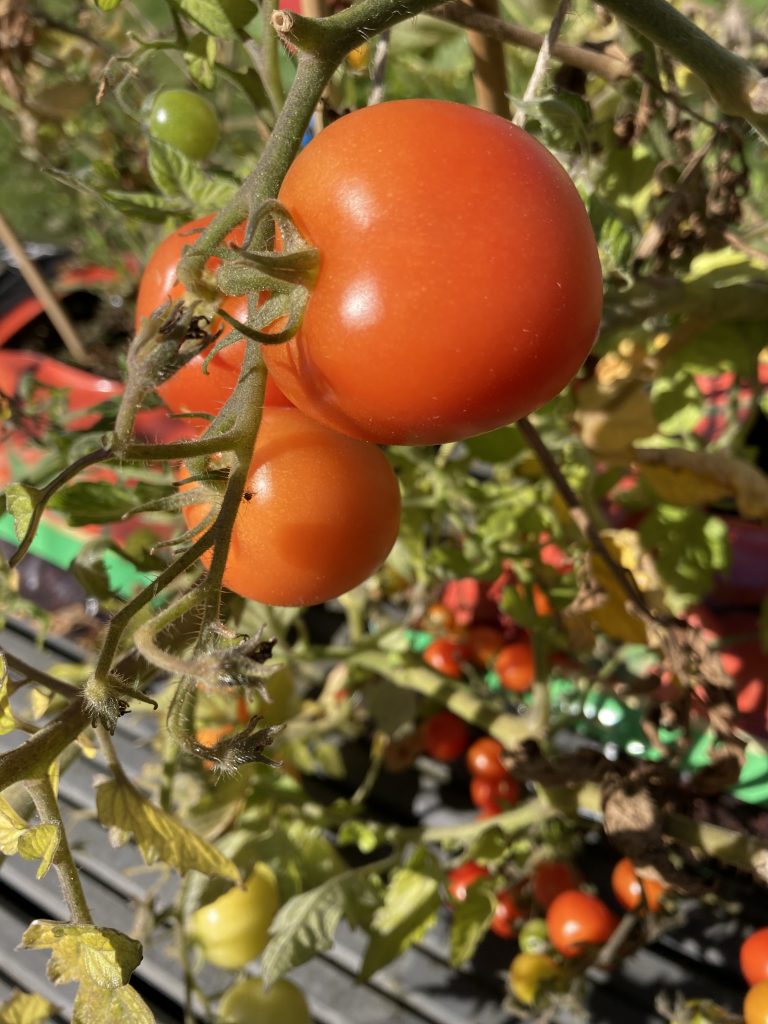It is perhaps no surprise based on the content of Family Feed that 99% of the cooking in our house is done by Gem. It’s not so much that I can’t cook, but I am not nearly as good at it as Gem is, nor does it bring me the same sense of joy. And generally I can’t get Gem not to cook! So I had to find a way to contribute to the family table beyond laying it. So I wondered: could I grow my own veg?
When the first COVID-19 lockdown struck I, like so many others, suddenly developed an intense fascination with the garden. Our new-build house has a decently sized back garden that we previously enjoyed strictly on the sunniest summer days. In the five years we have lived here the garden has changed very little. But in March and April, when we had 10 weeks of warm and sunny weather, it became a haven like never before.
When coronavirus hit and the country went into lockdown I was profoundly grateful that we have an outdoor space of our own. It really did help get through those first few weeks of near total isolation and provided a much-needed distraction from the constant news cycle.
Starting out (with a lot of help!)
Thankfully in the April of 2019 we put in a deck in the South West facing corner, cut in some borders and — because of the arrival of children — a 2m x 2m raised bed in which I intended to grow radishes, peas and sunflowers.
Given lockdown and an abundance of time on my hands however, by April this year we had: eight tomato plants; two types of courgette; two types of pumpkin; 10 sugar snap peas; aubergine; two sprouts; potatoes; and strawberries soaking up the spring sunshine!
I am extremely lucky that one of my good friends in Manchester has an allotment and was able to raise most of the plants in his greenhouse up to a size where they could be planted out pretty much straight away. Having a mate with an allotment, green fingers and generous nature is definitely a cheat I can recommend.
Get a courgette
Of all the veg we grew, the potatoes were the most surprising and the courgettes the most useful. Courgettes are a great starter on your way to grow your own veg. They crop consistently for months and look striking with their sprawling vines, giant leaves and fleeting but beautiful flowers. Also, from my very limited experience, they’re pretty hardy. If you have enough space it’s definitely one to go for first.
The courgettes were also always welcome in the kitchen, especially the rounder, fatter Lebanese variety. They went into salads, were spiralized into courgetti, grilled on the BBQ and bulked out soups and pasta sauces galore. The standard straight courgettes were no different than the ubiquitous supermarket variety, where the Lebanese ones were meatier and firmer. They’re also fantastic for stuffing thanks to the lighter, thinner skins.
Family favourites
Tomatoes are also a staple of the beginner and it’s easy to see why. They are relatively easy to grow and bear one of the most versatile fruits we have. A good proportion of all ours have been eaten straight from the vine when we’re pottering and playing outside.
I grew all of the tomatoes outdoors, mostly on the deck in grow bags. Given the fact that we are in the north, and have a garden with a less than ideal aspect, I wasn’t sure we’d get a crop at all. But all bar one plant produced a decent yield in the end.
When I bought the seeds I hadn’t quite grasped the different structures of tomato plant available. Usually divided into bushy and cordon, the plants grow quite differently and require slightly different setups to get the best from them. Bush varieties are, err, bushy, while cordon tomatoes are single stem and will continue growing upwards so long as they’re supported.
The following tips helped produce healthy plants and decent crops of fruit:
- Really roll your grow bag to break up the compost inside and ‘fluff’ the bag up to ensure you can dig a nice deep hole for your plants
- Bury the tomato plants deep. Don’t be afraid to remove leaves to expose more stem — 6 or 8 inches even — when planting. The tiny hairs on the stems will turn into roots on contact with the moist soil, which helps to develop a strong root structure to support the plant above.
- Don’t suffer suckers. In the 90˚ angle between leaf and stem, new growth will appear at 45˚. Left unchecked these ‘suckers’ grow into new stems with their own leaves, flowers, fruits… and more suckers! Given free reign your plant will grow unruly and quickly surpass the capability of its immature root system. When you see these suckers, simply pinch them off close to the stem to allow the plant to concentrate its resources on the main stem and a few high-quality trusses.
- Water consistently to keep the compost moist but not waterlogged. This takes some care as the amount of water required will depend on the temperature and the size of the plants, both of which are always changing. In hot weather I watered every morning at roughly 1.5 litres per bag, a bit less when it was cooler. Water deeply to encourage the roots to develop.
- Keep an eye out for blight, whitefly and various other pests — none of which I suffered, thankfully.
Nothing to lose
I am guessing any experiments with growing your own veg will be just that — experiments. And so anything is worth a go. Our eldest found an old potato that had started to sprout. Just a normal supermarket spud, which we planted in a gap in the border sometime in March, and forgot about it. After a while, a small, furry-leaved plant emerged, which grew into a big plant and delivered the following crop!

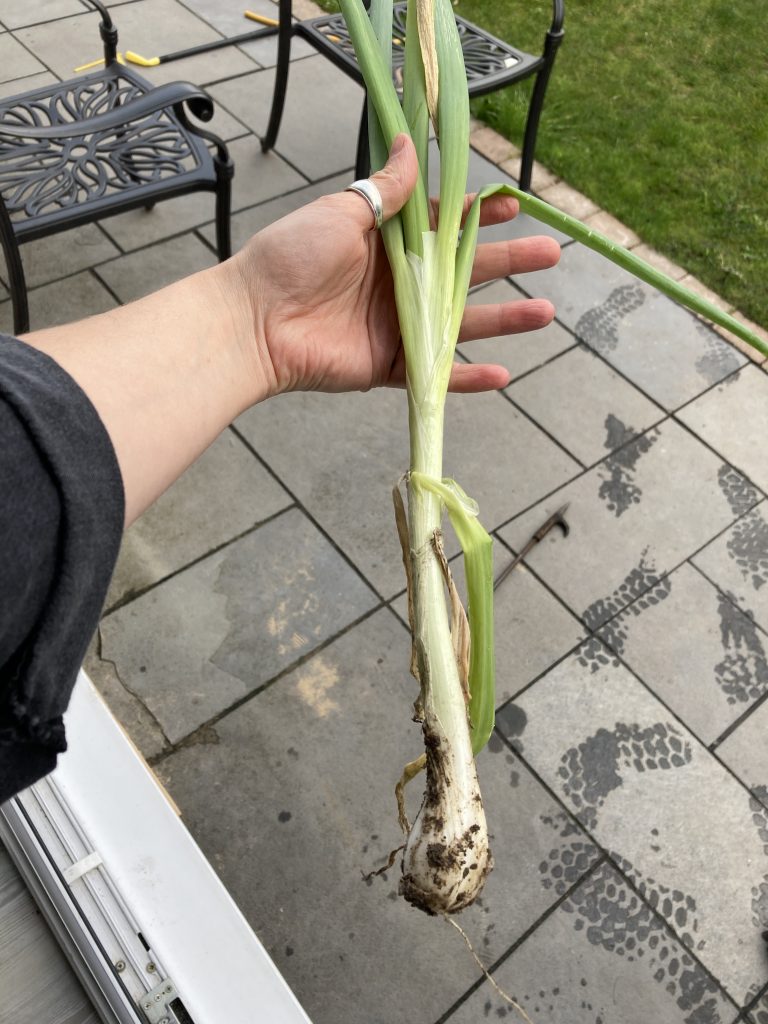
Things I wish I’d known / paid attention to:
- Courgettes and pumpkins need a lot space when they get going. Ours were planted in such a way that they could trail out of the raised bed and over the lawn. This of course meant pumpkins and courgettes growing all over the place! Not a big issue but they’re spiky little blighters and not ideal for curious young hands.
- Tomatoes can do just as well in the ground as in a bag. Out ‘best’ tomato plant was a leftover that we had no room for in the bags, so it went straight into the soil and was left to it. It ended up being a lovely single-stem straight plant with four nice trusses of fruits. It would have gone on to produce more, but the relatively short full-sun season here meant I stopped at four.
As we look forward to 2021 and the new growing season I am determined to make a better go of it based on the learnings of 2020. Tomatoes and Lebanese courgette will definitely feature. We’ll assess the sprouts after the first frost. Sugarsnap peas weren’t worth the space they grew in. And the kids and I want much, much bigger pumpkins 😉
I hope that the enforced lockdown will have some lasting positive impact as those of us fortunate enough to have outdoor space turn to working the land in our limited ways. It’s good for the soul, throws up some surprises… and it keeps chef happy.

